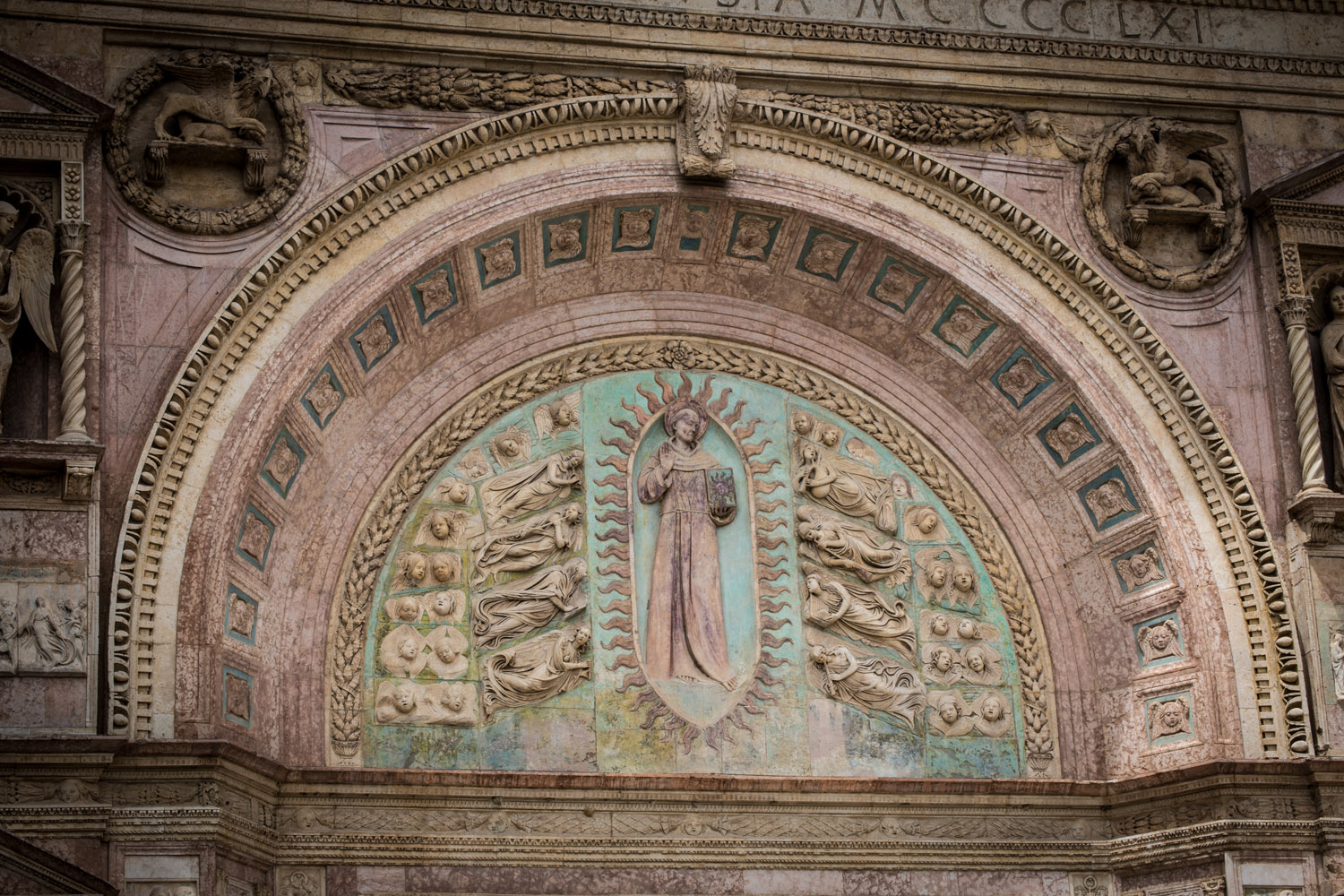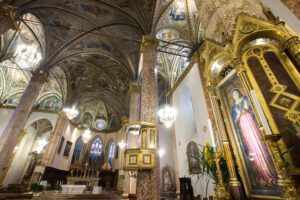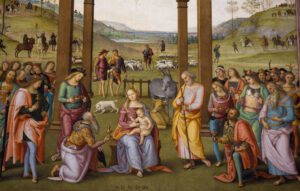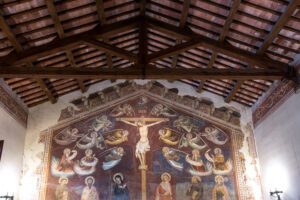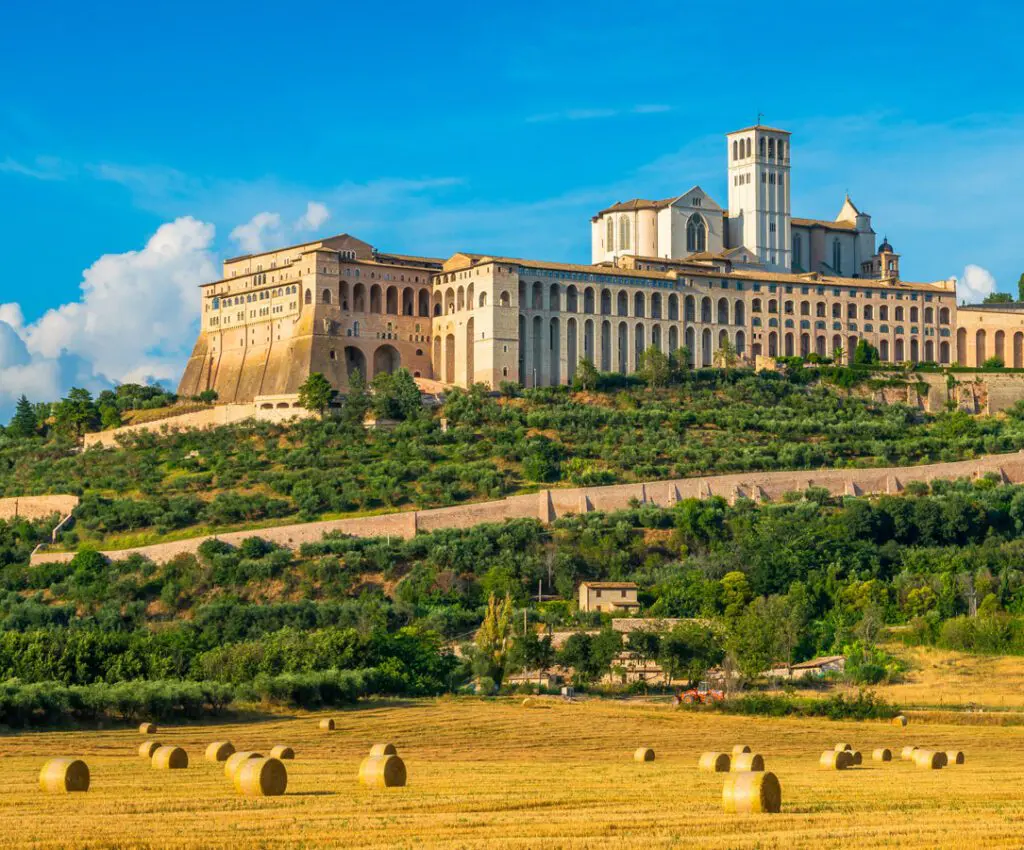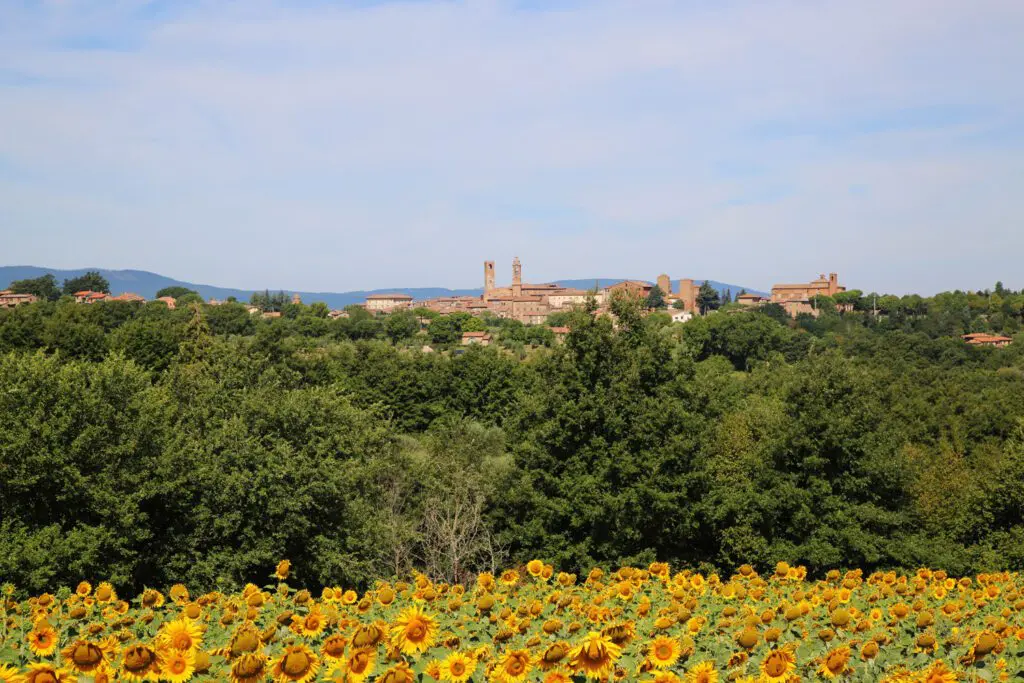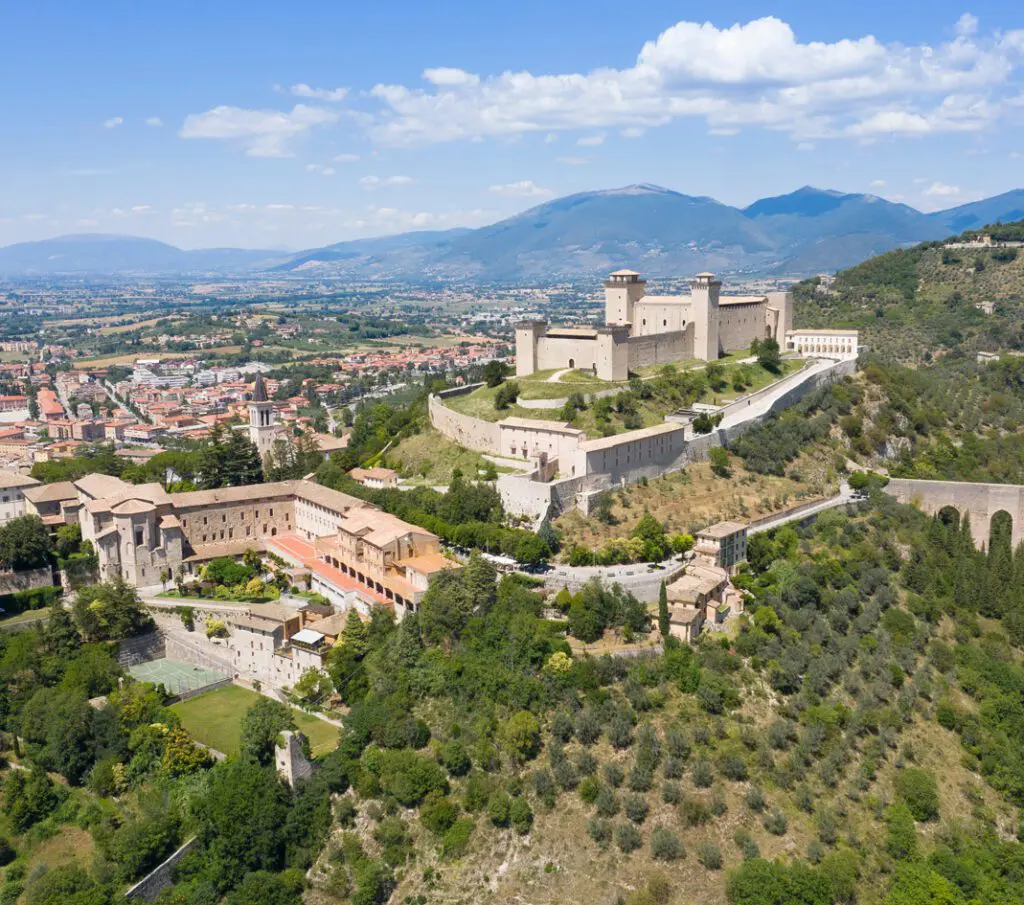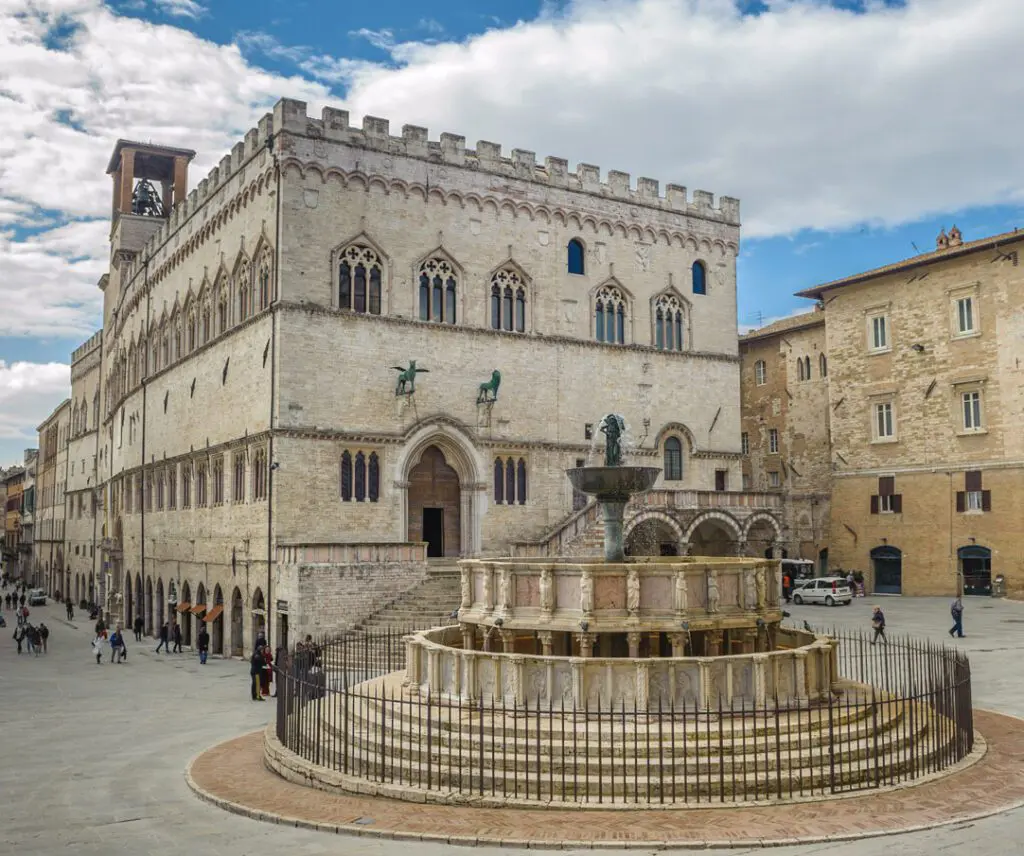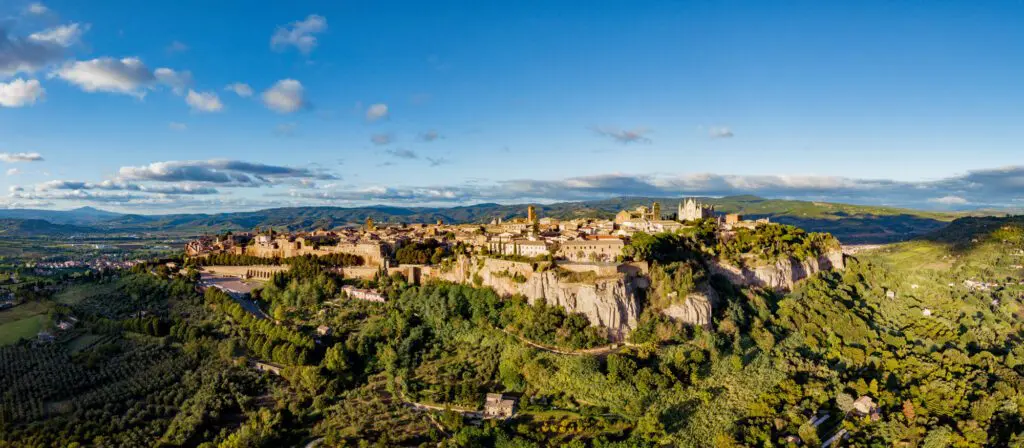Perugia e San Bernardino
Telling about the beauty of Saint Francis Square, we cannot but start by mentioning Saint Bernardine of Siena, a friar from that town in Tuscany, who had frequent, influential contacts with Perugia – see below.
From Corso Vannucci (Main Street), one can take Via dei Priori, the downhill street that starts under the great arch next to the doorway of the Palace of Priors. The street, that already existed in the Etruscan Era, leads westward, toward a town gate that would be renamed Porta Trasimena (in the direction of Lake Trasimeno) during the Middle Ages. It is lined with churches; more or less at its mid-length, see the majestic tower called Torre degli Sciri, one of the few still in place after so many vicissitudes. Beyond the tower, on the right, the street comes out at Saint Francis Square, easy to spot thanks to a lawn: here are the Oratory (little church) of Saint Bernardine and, precisely, the Church of San Francesco al Prato, “Saint Francis next to a Lawn.”
In a Medieval town like Perugia, with few flat areas and narrow, steep alleys, Saint Francis Square is a true novelty. It is in fact a favorite relaxing place for students of the nearby Academy of Fine Arts, housed in the former Convent of Saint Francis, or for children who come and play on the grass.

The Franciscan Community
The history of this place started with the coming of the “mendicant Orders” in the 13th century. In 1234, the Commune gave the Dominicans for free a terrain in the eastern side of Perugia, where they built their convent; while the Franciscans had to buy at a high price the terrain they needed, that was in Campo d’Orto (a “field with a vegetable garden”), the former name of the square. Only in 1251 would they lay the foundation stone, blessed by Pope Innocent IV. In 1253 the building of the Franciscan architectural complex began. It would soon be chosen by members of noble families in Perugia as a place of good omen to be buried in.
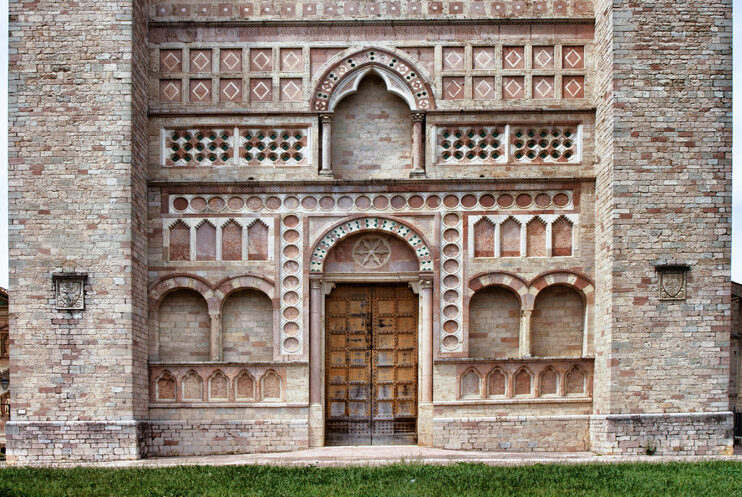
San Francesco al Prato, a Troubled Story
The Franciscan convent was actually built on a soil subject to landslides, so already in the 15th century they tried – unsuccessfully – to strengthen it. The Church of San Francesco al Prato underwent many phases of building and remaking in the course of time, the most considerable having been carried out in the 17th and 18th centuries. Important restorations were then made in 1926, while the façade was reconstructed and given the current look no sooner than 1962. The church’s vicissitudes were still not at their end, anyway. After further interventions, it has been designated as an Auditorium, to be used as a concert hall or for cultural events.

Stolen Masterpieces
Until 1608, San Francesco al Prato featured the “Baglioni Altarpiece,” the Deposition of Christ painted by Raphael – he had been commissioned by the Baglioni family. Then Cardinal Scipione Borghese. had it stolen by the friars, who sent it to Rome to increase the Cardinal’s extraordinary collection, where it is still kept (Galleria Borghese). In the church also existed a Coronation of Virgin Mary, again by Raphael, and Perugino’s Resurrection of Christ: both were requisitioned by Napoleon in 1797. When in 1815 they were given back after Napoleon’s fall, they were however held at the Pinacoteca Vaticana (Vatican Art Gallery) in Rome.
The Oratory of Saint Bernardine
In the bright light of Saint Francis Square, behind the green surface of the lawn, there is an Oratory (literally, from Latin, a “place where to pray”) dedicated to Saint Bernardine of Siena. One of the most important Renaissance monuments in Perugia, it makes reference to the fiery preaching of the Tuscan Saint in our town. He came here in 1425, then in 1427, and his words against the moral decadence of the people proved so powerful that in 1428 the Commune modified its Statute in order to forbid such violent “games” as bull hunting and the battle with stones. Bernardine would come back to Perugia again in 1444, not much time before his death.
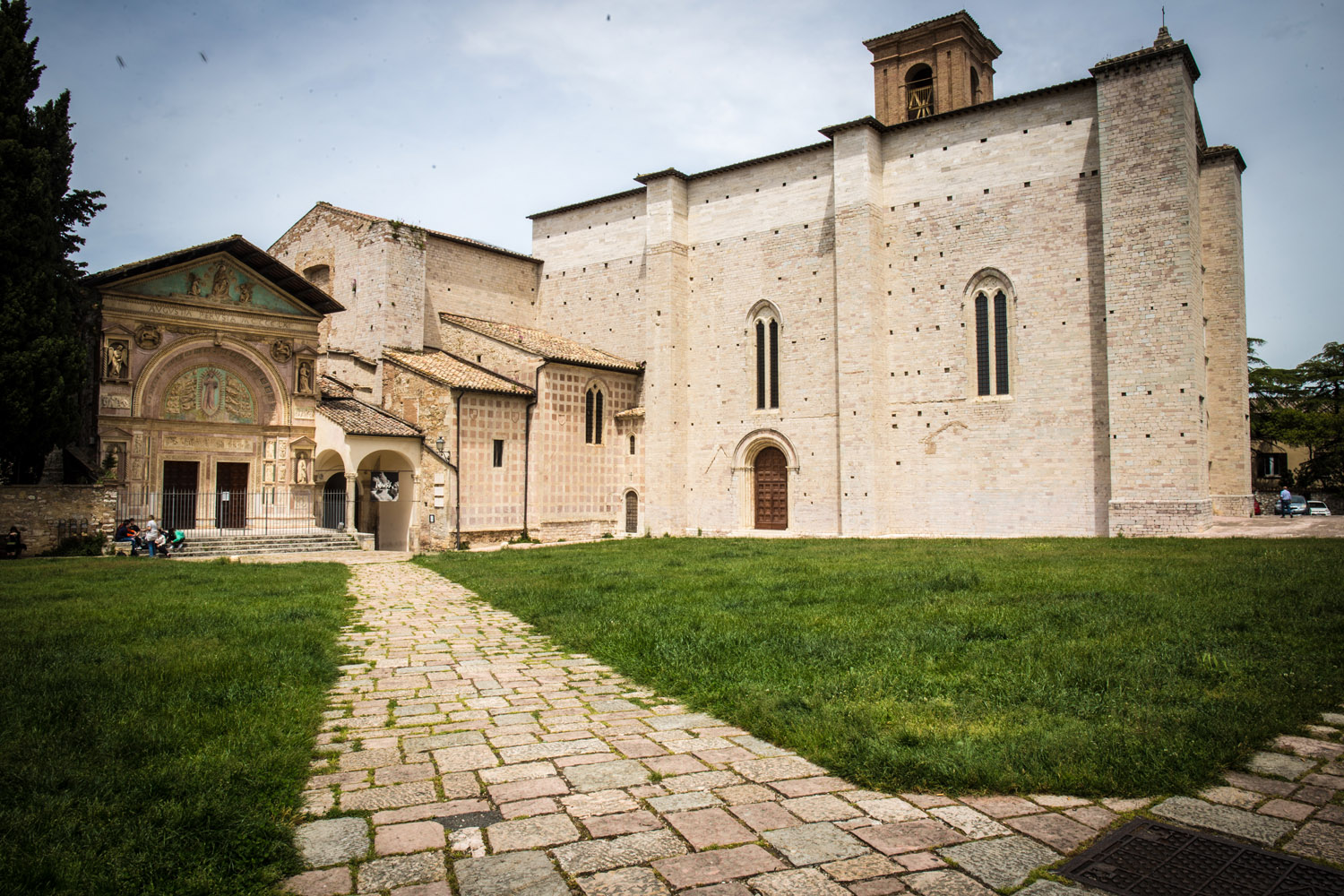
A Wonderful Façade
The Oratory was built by decision of the “general minister” (the head) of the Friars Minor, who in 1451 launched a funding campaign. One year later, the building was already there! – except for the façade, that had to be completed according to a complex iconography so as to exalt the glory of Saint Bernardine. The job, an absolutely prestigious one, was bestowed on a sculptor from Florence, Agostino di Antonio di Duccio (1418 – ca 1481), who would be finished with it in a period between 1457 and 1461. The artist transformed the façade into a many-colored, precious surface, where the Saint is shown as a peacemaker in the troubled setting of 15th century Perugia. The picture does not follow strict rules of perspective, it rather delights in the refinement of its own reliefs and the hues of its materials.
